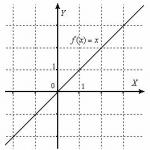Adaptation plan. Special personnel adaptation program. Example of complex adaptation
The adaptation program is a set of specific actions that need to be performed by the employee responsible for adaptation.
Managing the adaptation process is influencing the factors that predetermine its progress, timing, and reducing adverse consequences. In various textbooks there are different synonyms for adaptation programs - they are also called orientation programs or simply orientation. The essence of these phenomena is approximately the same. In this research paper, the term “onboarding program” will be used because onboarding is a basic and comprehensive process covering induction and orientation to the organization. The adaptation program is usually divided into general and special; below are their brief descriptions.
The overall program covers the entire organization as a whole. The following questions are addressed here:
1. General idea of the company: history, goals, priorities, problems, traditions, norms, standards, rites, rituals, mottos, slogans, products and bringing them to the consumer, organizational structure, external relations of the company and internal communications, information about managers;
2. Personnel policy of the organization: principles of personnel policy; principles of personnel selection; areas of professional training and advanced training, rules for the use of various working hours, rules for the protection of trade secrets and technical documentation;
3. Remuneration: norms and forms of remuneration and ranking of workers, payment of days off, overtime;
4. Additional benefits: insurance, recording of work experience, support in case of dismissal or retirement, on-the-job training opportunities, availability of a canteen and buffets;
5. Labor protection and compliance with safety regulations: (places of first aid, precautions, fire safety rules; building plan;
6. The employee and his relationship with the trade union: terms and conditions of hiring, appointment, relocation, promotion, probationary period, information about failures at work and being late for work, the rights and responsibilities of the employee, the rights of the immediate supervisor, management and evaluation of work performance, discipline and collections, filing complaints, communication;
7. Ensuring normal life and functioning: catering, availability of service entrances, conditions for parking private cars;
8. Economic factors: cost of labor, cost of labor tools and equipment of the organization as a whole, damage from absenteeism, tardiness, accidents.
After implementation general program it is necessary to move on to a special program that covers issues related specifically to any department or workplace and is implemented in the form of special conversations with employees of the department to which the newcomer came, as well as in the form of interviews with the manager. It includes:
1. Functions of the unit: goals and priorities, organization and structure, areas of activity, relationships with other units, relationships within the unit;
2. Job duties and responsibilities: a detailed description of the work and expected results, an explanation of what is needed this work, a description of its importance, standards for the quality of work performance and the basis for assessing its performance, the duration of the working day and the schedule of breaks;
3. Required reporting: types of assistance provided by the organization in what cases and how to ask for them, relations with local and national inspectorates;
4. Procedures, rules, regulations: rules that characterize this unit, reporting of accidents and dangers, hygiene standards, security and problems associated with theft, rules of conduct in the workplace, control of violations of discipline (labor and administrative procedures), breaks (for personal needs, smoke breaks, lunch, hygiene), use of equipment;
5. Representation of department employees.
These programs are used for both primary and secondary adaptation. Adaptation of employees who do not have work experience is different in that it consists not only of assimilation of information about the organization, but also of training in the work itself, therefore the adaptation program must necessarily include training. A successful workforce onboarding program creates a workforce that is more capable and highly motivated to accomplish the organization's challenges. Naturally, this leads to increased productivity.
The adaptation process can be divided into four stages, their description is presented below.
Stage 1: “assessing the beginner’s level of preparedness.” This stage is a necessary condition for adaptation, since it is at this stage that an effective adaptation program is developed. If an employee has not only special training, but also experience working in similar departments of other companies, his adaptation period will be shorter. But organizations are different from each other and may have different ways of solving the same problem that are unusual for a new employee. The organizational structure depends on a number of parameters (activity technology, external infrastructure and personnel), a newcomer in any case finds himself in an unfamiliar situation in a new organization.
Stage 2: “orientation” - practical acquaintance of the new employee with his responsibilities and requirements that are imposed on him by the organization.
Stage 3: “effective adaptation.” This stage consists of the newcomer’s adaptation to his status and is largely determined by his inclusion in interpersonal relationships with colleagues. As part of this stage, it is necessary to give the newcomer the opportunity to actively act in various areas, testing on himself and testing the acquired knowledge about the organization. It is important to provide maximum support to a new employee, regularly assessing the effectiveness of activities and the characteristics of interaction with colleagues.
Stage 4: “functioning”. The stage of completion of the adaptation process is characterized by gradual overcoming of production and interpersonal problems and the transition to stable work. If the program is not prepared, adaptation occurs after 1-1.5 years of work. If the process is regulated, it may occur within a few months.
Based on all of the above, the following conclusions can be drawn: an adaptation program is a set of specific actions that need to be performed by the employee responsible for adaptation. The onboarding program should include a general and a specialized part that will cover all aspects of the organization. At each of the listed stages, a well-thought-out adaptation management system is needed, as it reduces the time required for employee adaptation. The need to manage adaptation is associated with great risks and potential damage to both production and workers. Adaptation of employees who do not have work experience is different in that it consists not only of assimilation of information about the organization, but also of training in the work itself, therefore the adaptation program must necessarily include training.
Increasing the efficiency of the sales department in 50 days Ryazantsev Alexey
Template "employee adaptation sheet"
A list of tasks for the probationary period was received from the head of the department.
The plan is drawn up taking into account the main specifics of the employee’s work, his job responsibilities, standard tasks, knowledge about the company, product and clients. Successful completion of training, practice and adaptation in a team serves as the basis for graduation probationary period. The adaptation sheet is kept by the mentor, endorsed at the end of the day, and two days before the end of the probationary period, it is submitted to the head of the department with marks and a conclusion. The manager prepares a report for the executive director.
Employee profile:

Training schedule:

Practical tasks:

Results at the end of the probationary period:

Employee signature _____________
"__" ______________ 20__
From the book Copywriting: secrets of writing advertising and PR texts author Ivanova Kira AlekseevnaFact sheet A fact sheet, as is quite obvious from its very name, should contain only facts and nothing but facts. Fact sheet in in brief conveys basic information about the organization, always linked to a specific event, and communicates
From the book Get Everything Out of Business! 200 ways to increase sales and profits authorCompetent price list Most price lists are made completely standardly - it is a white sheet of A4 paper, on which the company’s existing positions are written in very small print. They all look the same and visually do not differ from each other in any way. Having received such
From the book 99 sales tools. Effective methods making a profit author Mrochkovsky Nikolay SergeevichChecklist for every day Let's consider a checklist for every day. What it is? In essence, a checklist is a regular list of actions, where the sales manager puts a tick next to each completed action. This is done because both managers and executives, and practically
From the book Business Transformation. Building an effective company author Parabellum Andrey AlekseevichChecklist for every day This checklist (Table 6) is needed so that the head of the sales department does not forget about the actions that he must perform every day, regardless of his employment and the tasks facing him. Otherwise, the sales department will be out of control.
From the book Rules and Taboos of a Manager author Vlasova Nelly MakarovnaPrice List Everything you sell must be included in a one-page price list, indicating related services and prices. Do this in Excel or any other spreadsheet. The price list format is standard: article number, short description product, retail price and price
From the book Infobusiness in one day author Ushanov Azamat7 Generalized checklist of a manager When going on a flight, the pilot uses his checklist (list of control objects) to check the condition and readiness of all aircraft systems for flight. If the manager does not check the status of his control systems weekly, they will become
From the book Business Plan 100%. Strategy and tactics effective business by Rhonda Abrams From the book Influence and Power. Win-win techniques author Parabellum Andrey Alekseevich From the book Theory of Constraints by Goldratt. Systems approach to continuous improvement by Detmer William5. Price list This is a very simple thing that makes life easier. If you want to start selling, then make a simple price list, make an offer and tell one story about why you decided to do this activity, why you decided to provide these services. Mention
From the book E-mail marketing for an online store. Implementation instructions author Efimov Alexey Borisovich From the book How to Sell Products with Difficult Choices author Repev Alexander PavlovichTemplate In addition to understanding the amount of work, the list of notifications helps you see what individual letters look like and what content they include: texts, lists, tables, photos of products, etc. All this will be useful when developing a more colorful and convenient template. Transition
From the book Startup Guide. How to start... and not close your online business author Zobnin M. R.Q: Checklist for preparing the mailing 1. Get information about the subject of the mailing and products (set of links) from the manager.2. Determine the layout of the letter.3. Copy one of the previous letters (the most suitable) and adjust the layout to the current letter.4. Write
From the book Management Practice by human resourses author Armstrong MichaelMarketing Audit: Introduction and Checklist Among the methods of marketing thinking, the most important is the marketing audit. This is a search for answers to dozens of large and small questions “from the Client” about the company and its products; about the market and competitors. And also about the
From the book Business Process Management. Practical guide on successful implementation of projects by Jeston JohnHow to test an idea: a checklist On the one hand, this is not true: even before it becomes a business, the idea will have to be changed many times. On the other hand, to downplay the role of the idea too
The process of onboarding new personnel in a company, unfortunately, continues to be a forgotten “child” for many recruiting managers. Until now, many companies do not pay enough attention to the process of organizing work on personnel adaptation. Some people do not have enough time resources, others do not have money, and at this stage employees leave the company who, due to various shortcomings in the adaptation program, were unable to adapt to the new conditions.
An adaptation period is necessary so that the new employee can quickly adapt to the company, working conditions and team. A properly developed staff adaptation plan will help avoid troubles and surprises, both on the part of the employee and the company. In addition, well thought out adaptation program will help save the company money, because a new employee cannot immediately return the funds and time invested in him by managers and staff. In general, it also reduces the feeling of anxiety and uncertainty among newcomers, significantly reduces staff turnover, and creates a positive attitude towards the work process and satisfaction.
Let's consider what stages should be present in the personnel adaptation plan so that this process is as painless as possible for both parties.
It is important to note that, in addition to the HR manager, the immediate head of the department is also involved in the process of adapting a new employee. This option is most effective for companies of up to 30-40 people. If your company is larger in size, then you need to choose a mentor. Since the manager already has enough work, the selected supervisor will help with the adaptation of the new employee. It is important that the customer’s personality responds following requirements: having more than 3 years of experience in the company, a high level of professional and communication competencies, as well as the desire of the employee himself to play the role of a mentor. It is important that he not only be able to cope well with his professional tasks, but could also teach it to others.
- Pre-adaptation period. This stage begins with the actual interview with the candidate. It is then that he receives the very first information about the company. Here it is important to provide it in full and objectively, without holding back anything, as far as the company’s policy allows. As experience shows, the more reliable information a future employee receives at this stage, the easier the adaptation process will be in the future.
- Primary stage. It should be done immediately after the decision to hire a candidate has been made. Sent to him contract of employment, in which you need to indicate in detail all the conditions offered to him and agree on everything in as much detail as possible while still “on shore”. This is necessary to ensure that in the future there are no discrepancies between the candidate and the company in understanding the terms of cooperation. It is also necessary to have a conversation, during which it is necessary to highlight such points as the history of the company, the main stages of its development, the main provisions of the corporate culture, requirements for the company’s employees, the style of clothing that is accepted, the procedure for remuneration and other necessary general information. Such a conversation can be conducted either by the recruiting manager or by the immediate supervisor. If the latter does this, then he also talks about the range of responsibilities and powers, voices the tasks and goals, including those by which the probationary period will be assessed. You definitely need to take a group on a tour, show where the dining room, toilet, etc. are located. public places. Also, the future employee gets acquainted with his workplace and introduces himself to the company team. When completing all employment documents, the employee must be familiarized not only with the employment contract, but also with the company’s internal regulations, job descriptions and other important documentation.
- Effective adaptation. This period is the most important in adaptation. His assessment as a professional will depend on how effectively and timely a person can complete the tasks assigned to him. Usually at this time a plan for entering the position is developed, where all the tasks to be completed are prescribed. This could be a study of local and general regulations, job descriptions, familiarization with methodological recommendations and different practical tasks. A separate block specifies the assigned tasks and criteria for assessing their implementation, familiarization with the accountability system and other documentation that the employee will maintain. It is also important that the employee is familiar with the range of services and/or products provided by the company. It is better to monitor the implementation of each stage by employees in order to notice in time if something goes wrong.
An example of what an employee adaptation plan looks like in principle:
necessary set of stationery and consumables
|
HR Manager HR Assistant HR manager HR employee Head of department HR manager Labor safety department worker |
|
|
1st week of work |
|
Mentor/Head of Unit |
|
1st month of work |
|
Mentor/Head of Unit |
|
2-3rd month of work |
|
Mentor/Head of Unit |
|
After passing the probationary period |
|
Mentor/Head of Unit |
 If the adaptation period was successful, the new employee will feel confident and comfortable in the company. It should be remembered that adaptation is a two-way process. Here everything depends on the employee’s desire to work in this company, and it, in turn, should assist him in every possible way in training and support in the person of its employees.
If the adaptation period was successful, the new employee will feel confident and comfortable in the company. It should be remembered that adaptation is a two-way process. Here everything depends on the employee’s desire to work in this company, and it, in turn, should assist him in every possible way in training and support in the person of its employees.
The clearest indicator that the adaptation program is structured properly is that the employee remains with the company for a long time. An alarming signal is the dismissal of an employee before a year. In this case, you should check the adaptation program and the work of the manager in this regard. After all, if an employee does not find support, respect and understanding from the manager and at the same time understands that he can find another job, he is unlikely to stay in this one.
When an employer hires a new employee, they are both filled with hope. The employee hopes that he will like it in the new place, and the employer immediately expects 100% productivity from the employee. But before work gets better, both the employee, the employer, and the workforce will have to go through a not always simple stage called “adaptation of a new employee.”
Onboarding a new employee– this is a type of socio-psychological adaptation, representing the process of a newcomer’s active entry into a position through interaction with a new work environment.
Successful adaptation to a new place - responsibility not only the employee himself, but also his new management. No matter how responsible, sociable, stress-resistant, courageous and experienced an employee may be, he finds himself in a new environment, and therefore in stressful situation , in a situation of need to adapt, adapt, change.
A competent and wise employer makes sure that the adaptation of new employees takes place organized, he doesn’t let her take her course.
Companies that do not care about helping a newcomer get used to the team, get used to a new workplace, understand their job responsibilities, and feel comfortable, doom themselves to constant staff turnover.
New employee precisely during the adaptation period decides whether he will continue to work in this organization or not. According to statistics 90% people who left their place of work without having worked there for even a year decided to leave already in the first days and weeks, and the rest of the time we just endured and waited for the right moment or the “last straw”!
If the employee doesn't like it new position, he has two options: quit or endure. People, unable to leave a job they don’t like or simply out of fear of doing so, endure conditions that are unbearable for them for years! And the organization suffers losses.
There are many reasons why a new team member may leave a job soon after being hired, but unsuccessful adaptation or even maladjustment in the workplace is one of the leading reasons!
Employer mistakes
A common mistake when recruiting personnel is looking for “ready” ideal candidate. But an ideal employee can only be “grow” in your organization. When a new employee comes to work, he is more or less suitable for the position; he cannot be a perfect fit right away! To become ideal employee, he needs to get comfortable, join the organization and work in it for some time.
In addition, the candidate for the position is a living person, he personality and cannot consist of merits alone. Treating a person like a machine or a robot who should neither get sick, nor have a personal life, nor contradict or complain is a big mistake.
 Often employers put themselves above workers and applicants, increase the requirements for the latter to the skies, while also forgetting to meet high requirements.
Often employers put themselves above workers and applicants, increase the requirements for the latter to the skies, while also forgetting to meet high requirements.
For example, an unsuccessful entrepreneur with an inflated ego “weeds out” candidates for a position who are capable of becoming excellent employees, only because they have no work experience, or hires them, but treats disrespectful without worrying about their psychological comfort at all . At the same time, such an employer does not understand that his organization is not one in which experienced specialists would go to work and that existing candidates need to be valued.
Failure to assign a probationary period – Also common mistake employers . A probationary period is necessary to understand whether the candidate is suitable for the position and whether he likes it. This is the time when not only the new employee tries to please the management, but also the management must try to please the newcomer.
Successful onboarding of new employees is defined as: important goal employers who understand that a hardworking, motivated employee who works as management expects of him is an employee whose helped adapt and taught work exactly as required to work in the position he occupies.
Stages of adaptation for a new employee
From the success of employee adaptation depends efficiency of the company. An employee who has been helped by the team and management to successfully adapt to a new place will certainly respond with gratitude and high productivity.
On average, adaptation of a new employee lasts six months and is divided into stages:

- history of the formation and development of the company,
- goals and course of the company,
- internal rules and regulations,
- general requirements for personnel,
- personnel performance assessment system,
- wage system and so on.
- Introductory conversation with company employees. The team in which the new employee will work is informed of his arrival in order to create favorable atmosphere, a positive attitude towards the new person and reduce the stress caused by the need to accept him into an established team.
- Conversation with the immediate supervisor. During this conversation, the new employee will learn from his immediate supervisor his work goals and objectives, area of responsibility, functional responsibilities and other specific components of their work.
- Company tour. A new employee is taken through the entire organization, remembering the location of various departments and such important areas as the canteen, toilets, and so on. At the same stage, the employee must see his workplace.
- Meet the team. The employee introduces himself to the team in which he will directly work, and to all company personnel.
- Preparation of documents and familiarization with documentation. At this stage it is drawn up employment contract between the employee and the employer and all other documents necessary for hiring. For familiarization, the employee is provided with the internal labor regulations, job description and other important company documentation.

The final, successful completion of the adaptation period is indicated by the feeling confidence and comfort new employee at the workplace.
Employee adapts successfully, when he changes his behavior and compares it with the requirements of the company, when these requirements and his personal goals become compatible.
So, onboarding a new employee– a mutual process: the employee must want and try to work, and the organization must help him in this in every possible way (train and support).
If an employee who was suitable for the position quit due to at will before the end of the probationary period, it means that management made mistakes or paid insufficient attention to adaptation.
A person can adapt to any conditions, even very difficult and psychologically difficult ones. But will he do this when he does not find support, understanding, respect from management and the team, but at the same time understands that there is an opportunity to find another job? Hardly.
If you want to study the topic of adaptation of a new employee in more detail, we recommend reading the books by A. Ya. Kibanov “Personnel Management: Theory and Practice. Organization of career guidance and adaptation of personnel” and “Personnel management of an organization: current technologies of recruitment, adaptation and certification”
Find out what personnel adaptation is. We will tell you in detail about the types of adaptation. On specific examples We will show you how to properly build an adaptation system. Bonus: 6 common adaptation mistakes.
From the article you will learn:
Personnel adaptation: what a newcomer is afraid of
HR people know that every new employee experiences stress. He is afraid of not completing a task correctly, not finding a common language with colleagues, or breaking some unwritten rule and causing laughter or criticism.
Rating of new employee phobias
- I can’t cope with my responsibilities, I won’t be able to meet the deadline.
- I can’t find a common language with my colleagues.
- They will find me to have professional shortcomings or a gap in knowledge.
- I won't get along with the manager.
- I'm losing this place.
However, for many, the initial stress quickly passes and they begin to work effectively. But there are employees who take a long time to make decisions.
To speed up the adaptation process for such employees, special programs, tools and methods are being developed.
An example of adaptation would be "Three touches" program. The goal of the program is to quickly involve newcomers in work. By the end of the second month of work, new employees show excellent results and begin to move up the career ladder.
Ksenia Levykina, HR business partner of HiConversion, spoke in more detail on the pages of the HR Director magazine.
Traditionally distinguished 2 types of employee adaptation- production and non-production.
Production adaptation includes professional, psychophysiological, organizational and sanitary-hygienic adaptations.
Behind these long and clumsy words are procedures that are standard for all companies:
- the employee is introduced to the work rules;
- determine the terms of reference;
- show the workplace;
- present to colleagues.
Further, from the competence of HR, the employee falls into the competence of the labor safety inspector. Do you know that You can adapt employees already at the selection stage ? HR system experts will tell you how to do this.
Non-production adaptation- this is building informal relationships with colleagues. Holiday corporate parties, sports competitions, outings, in a word, everything that will give employees the opportunity to see in each other not only staff members and functional performers, but ordinary people who can be friends.
The classification of adaptation by type does not have a direct practical purpose. You can't tell an employee: " On Monday we have social adaptation, on Tuesday we have industrial adaptation, on Wednesday we have psychophysiological adaptation, on Thursday we have organizational adaptation, and on Friday we have economic adaptation and a banquet.”. The employee will undergo all types of adaptation simultaneously: on Monday, and Tuesday, and over the course of several very difficult weeks for him.
★Important fact. 80% of employees who left in the first six months after hiring made this decision in the first 2 weeks of work in the new place. This means that the employee made the decision to quit during the adaptation period.
HR is responsible for the adaptation of ordinary employees, and who is responsible for the adaptation of HR? This was discussed at the webinar -
Example of complex adaptation
In order for an employee to successfully undergo all types of adaptation in the workplace, a comprehensive system is needed. The adaptation system involves carrying out various activities and assigning those responsible for them. It is most convenient to present data on activities and those responsible in the form of a table.
Table. Adaptation of new employees in the first days of their work in the company
|
When to carry out |
Target |
What to organize |
Responsible |
|
Introduce the organization, give an idea of its structure |
The employee is registered in the HR department. Provide to newbie general information O work discipline and wages |
HR inspector, HR manager |
|
|
A Welcome training is conducted, during which basic information about the structure of the company, its mission and values, and the rules of conduct in the company are given in an interactive form. |
HR Manager (control - HR Director) |
6 Common Onboarding Mistakes
Error 1. A beginner is overloaded with unstructured information.
Error 2. The employee must perform duties that were not discussed during the interview.
Error 3. The adaptation period is too short.
Error 4. HR is not there on the new hire's first day of work.
Error 5. The new employee is left to his own devices.
Error 6. A beginner cannot immediately start working for some reason.






